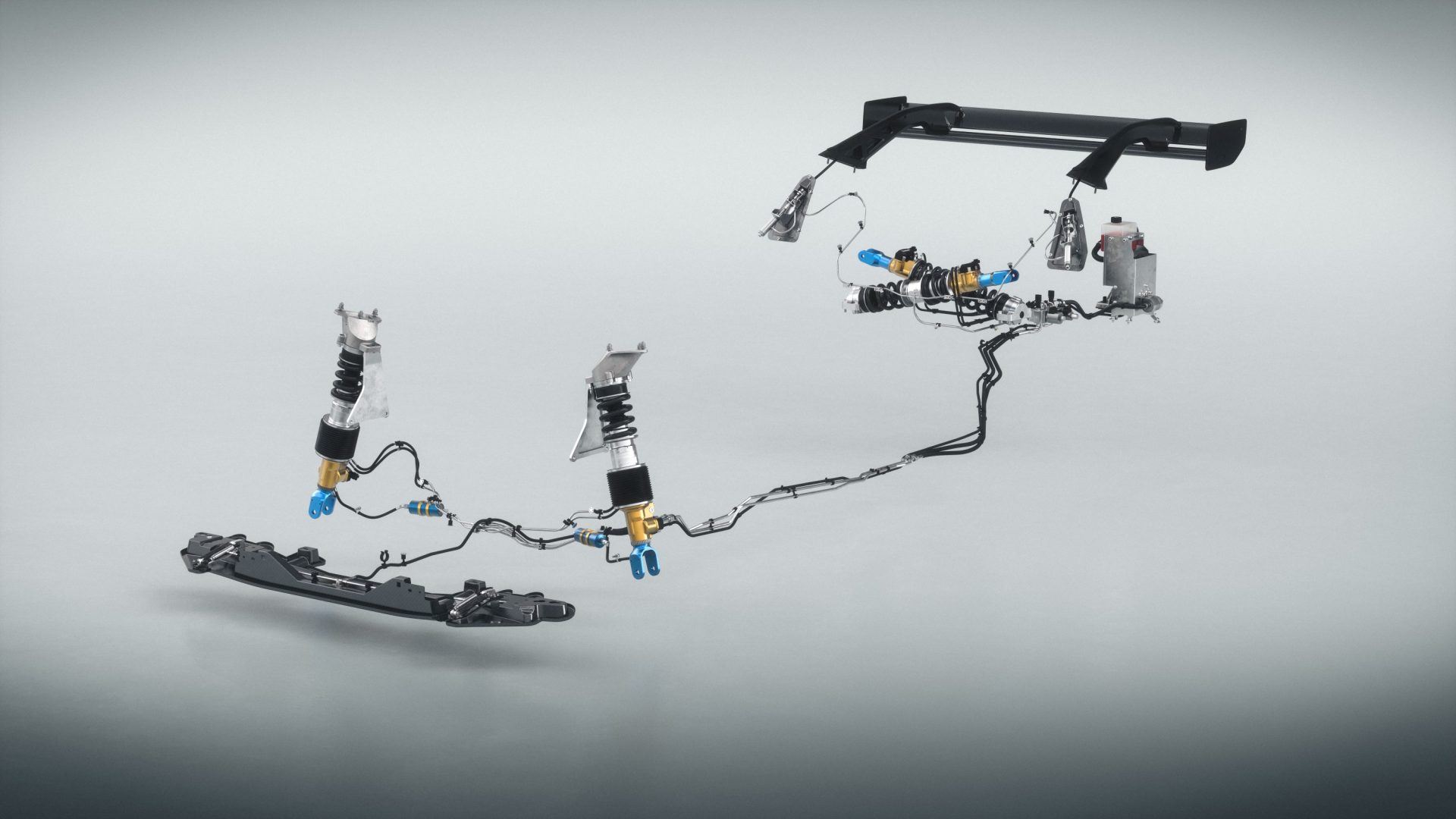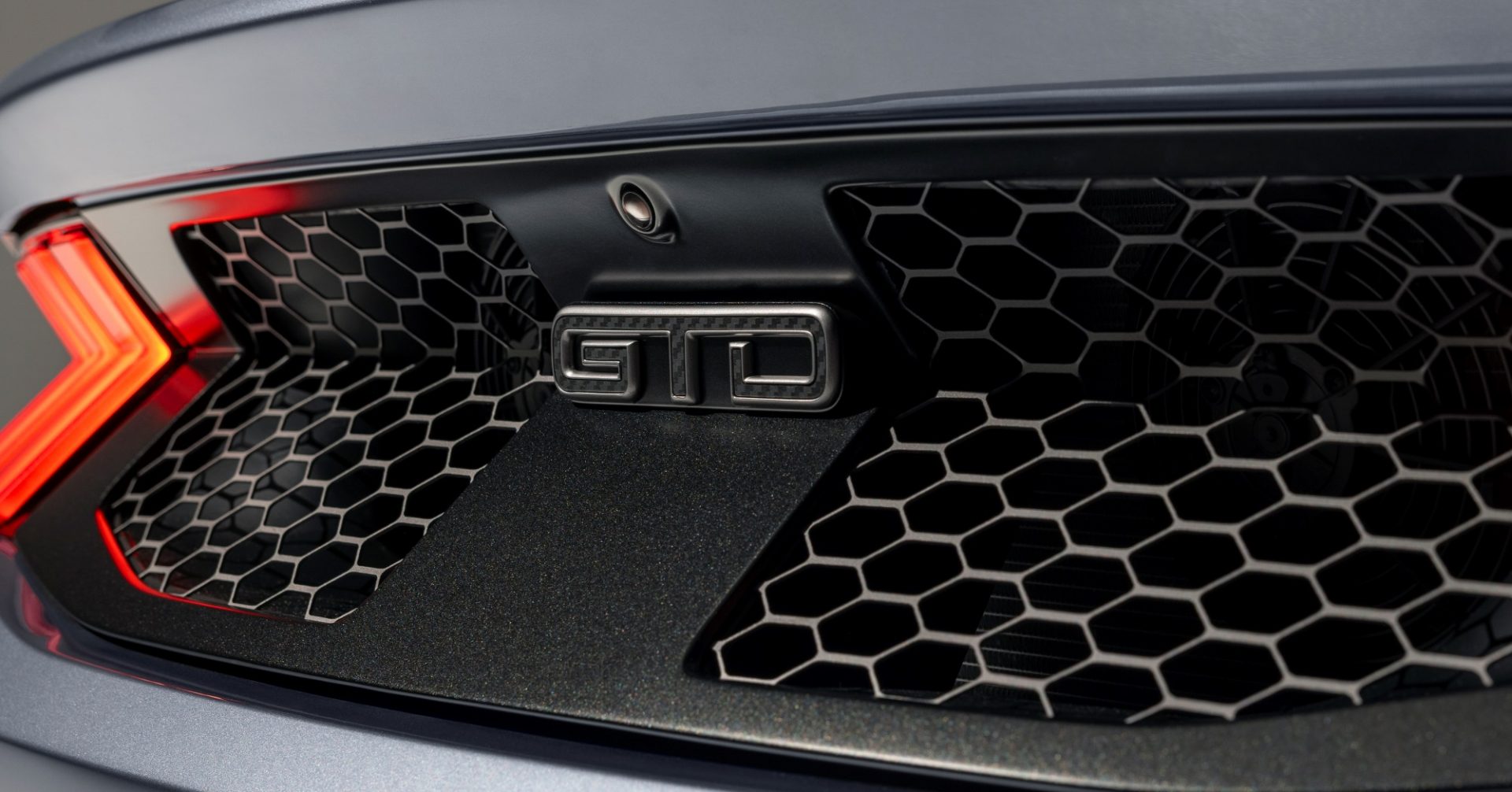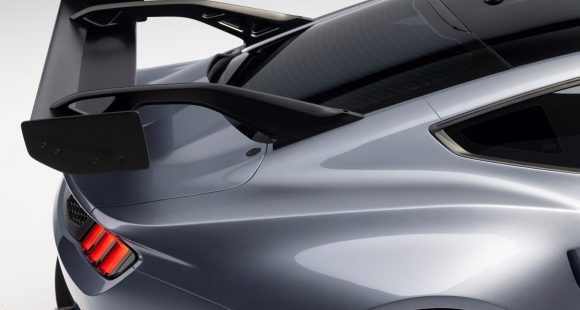Ford Mustang GTD Targets 800 Horsepower, Sub-7-Minute Nürburgring Lap Times
August 18, 2023It’s been no secret that Ford has positioned the 7th-generation Mustang to become a thoroughbred competition pony with the recent introduction of the GT3 and GT4 race cars. And now that track bred engineering is being put into the Mustang GTD, a limited edition, street-legal performance car.
The GTD was designed alongside the GT3, said to be “like no Mustang ever” and engineered to “go like hell”– a necessary mentality, as the Blue Oval wants the GTD to finish Nürburgring hot laps in under seven minutes. The GTD is the result of an ongoing collaboration between Ford and Multimatic, a partnership responsible for the Mustang GT3, Mustang GT4 and Le Mans-winning Ford GT.
While the most apparent changes are cosmetic– loads of additional aero, venting and all the proper race car aesthetics– the GTD is more than just skin deep.
The underpinnings truly are unique to the Mustang platform. Under the hood is a supercharged 5.2-liter V8 engine targeting 800 horsepower being sent to the rear wheels. That bit, along with the automatic dual-clutch transmission, may be reminiscent of the most recent GT500; but, this is where things get interesting. The aforementioned DCT, now an 8-geared transmission, is transaxle rear-mounted and paired with a carbon fiber driveshaft, helping to achieve a near 50/50 weight distribution.
Other engine enhancements include dual air intakes, an available titanium active valve exhaust system, and the first dry-sump engine oil system outfitted to a roadgoing Mustang. The latter was implemented to keep things lubricated during high-G turns.
Speaking of, handling is very much a key player in setting stupid fast lap times; so, what good is all that power if it can’t be appropriately put down to the tarmac? To answer the question of optimal grip, the Mustang GTD uses a special semi-active suspension featuring adaptive spool valve dampers with hydraulically actuated dual spring rate and height suspension. That’s a lot of words, the cliff notes of which being the GTD can switch between two unique suspension states, one for on-track and the other for on-road, lowering nearly 40mm (1.6-ish inches) in Track Mode. Overall, the GTD rides with a roughly 4-inch wider track than the Mustang GT.

But that’s not all. Up front, the GTD uses a short-long arm setup for lateral rigidity during intense cornering, and in back is an integral link pushrod and rocker arm architecture. The adaptive shock absorbers and coilovers are mounted in a horizontal cross pattern, creating a motion ratio from pushrod to damper of 1:1, allowing the GTD to more precisely respond to track conditions. If you’re a little lost, refer to the diagram above– it’ll make a lot more sense.
And if you looked long enough, you may have caught that the GTD’s available wing is tethered into the hydraulics. Yep, it’s an active aero element, mounted on the C-pillars and not the trunk to assist in balanced aerodynamics across both axles. Though, another reason for the wing’s placement may partially be due to the fact that the trunk has been axed– sorta. It’s been filled with the aforementioned semi-active suspension, plus a hydraulic control system and a transaxle cooling system. The trunk lid has been replaced by a special cover with two air scoops catching air off the back glass and through the heat exchangers.
Styling, all of which appears functional in its creation, starts down low with the 20-inch wheels, a standard set of aluminum rims with the option to go lighter with a forged magnesium. They’re wrapped by Michelin Pilot Sport Cup 2 tires, 325mm wide in front, 345mm in back; and behind those wheels are Brembo carbon ceramic brakes, cooled by special ducting below the rear suspension. Each body panel was sculpted to cut, grab, or channel air in a purposeful way, weight reductions abound through the carbon fiber construction of the fenders, hood, rear cover (replacing the trunk lid), door sills, front splitter, and diffuser and even the roof. You can opt for carbon fiber fascias forward and aft, should you desire all the savings. An additional aero can be bought in an aptly named aero package, bringing in a different underbody tray and hydraulically controlled front flaps that work in tandem with the active wing.
At this point, the interior feels like an aside, but it’s still important and impressive in its own right. Afterall, this is still a street-legal car, in case you forgot after digesting all that technical jargon. The cabin is wrapped in Miko suede, leather and carbon fiber. The driver is enlightened by digital displays and kept steady by RECARO seats, further tethered to the powertrain by 3D-printed titanium paddle shifters. That same material is used on the rotary shifter and serial plate, metal of which was taken from retired Lockheed Martin F-22s. Oh, and it should go without saying that the kids will have to take the bus, as the rear seats are outta here.
So, what does the most bodacious street-legal, factory assembled Mustang cost? If you can manage to get your hands on this limited-run model, expect MSRP to start at around $300,000. It starts assembly at Ford’s Flat Rock Assembly Plant before crossing our northern border for final assembly in the Multimatic facilities in Markham, Canada. We expect to see the 2025 Mustang GTD to start arriving to those lucky few late next year.





































